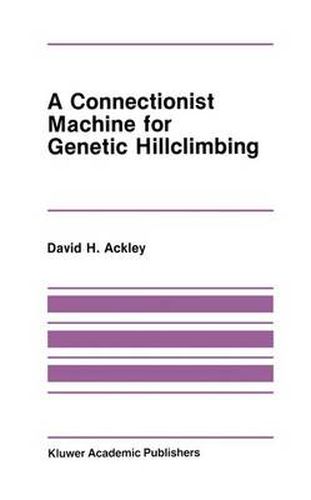Readings Newsletter
Become a Readings Member to make your shopping experience even easier.
Sign in or sign up for free!
You’re not far away from qualifying for FREE standard shipping within Australia
You’ve qualified for FREE standard shipping within Australia
The cart is loading…






This title is printed to order. This book may have been self-published. If so, we cannot guarantee the quality of the content. In the main most books will have gone through the editing process however some may not. We therefore suggest that you be aware of this before ordering this book. If in doubt check either the author or publisher’s details as we are unable to accept any returns unless they are faulty. Please contact us if you have any questions.
In the black box function optimization problem, a search strategy is required to find an extremal point of a function without knowing the structure of the function or the range of possible function values. Solving such problems efficiently requires two abilities. On the one hand, a strategy must be capable of learning while searching: It must gather global information about the space and concentrate the search in the most promising regions. On the other hand, a strategy must be capable of sustained exploration: If a search of the most promising region does not uncover a satisfactory point, the strategy must redirect its efforts into other regions of the space. This dissertation describes a connectionist learning machine that produces a search strategy called stochastic iterated genetic hillclimb ing (SIGH). Viewed over a short period of time, SIGH displays a coarse-to-fine searching strategy, like simulated annealing and genetic algorithms. However, in SIGH the convergence process is reversible. The connectionist implementation makes it possible to diverge the search after it has converged, and to recover coarse-grained informa tion about the space that was suppressed during convergence. The successful optimization of a complex function by SIGH usually in volves a series of such converge/diverge cycles.
$9.00 standard shipping within Australia
FREE standard shipping within Australia for orders over $100.00
Express & International shipping calculated at checkout
This title is printed to order. This book may have been self-published. If so, we cannot guarantee the quality of the content. In the main most books will have gone through the editing process however some may not. We therefore suggest that you be aware of this before ordering this book. If in doubt check either the author or publisher’s details as we are unable to accept any returns unless they are faulty. Please contact us if you have any questions.
In the black box function optimization problem, a search strategy is required to find an extremal point of a function without knowing the structure of the function or the range of possible function values. Solving such problems efficiently requires two abilities. On the one hand, a strategy must be capable of learning while searching: It must gather global information about the space and concentrate the search in the most promising regions. On the other hand, a strategy must be capable of sustained exploration: If a search of the most promising region does not uncover a satisfactory point, the strategy must redirect its efforts into other regions of the space. This dissertation describes a connectionist learning machine that produces a search strategy called stochastic iterated genetic hillclimb ing (SIGH). Viewed over a short period of time, SIGH displays a coarse-to-fine searching strategy, like simulated annealing and genetic algorithms. However, in SIGH the convergence process is reversible. The connectionist implementation makes it possible to diverge the search after it has converged, and to recover coarse-grained informa tion about the space that was suppressed during convergence. The successful optimization of a complex function by SIGH usually in volves a series of such converge/diverge cycles.